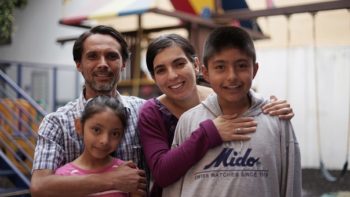Safety Plans for High-Risk Kids
 Safety Plans for High-Risk Kids
Safety Plans for High-Risk Kids
As our students become more anxious with home and school challenges, we find that we become fearful about their health and well-being. Some children will demonstrate their anxieties and stress by having nightmares, not eating, over-eating, sleeping too much, spending hours on screens, or isolating. As parents, it is our job to try and understand what is troubling our children and seek support when needed. We should not be afraid to ask for help. The longer we ignore or avoid a problem, the more frustrated and troubled our child may become.
How to Solve a Problem
Here is a sample script and worksheet you can use with your child to identify and troubleshoot a possible problem.
| I noticed that you are very sad and do not seem to want to play with your friends. Can you tell me what is bothering you?
Janey explains that Joey says mean things to her when she plays with him. He tells her that she is stupid and ugly. She is sad and hides at home so she does not have to play with him. |
| How can I help you with the problem? Can you describe what you have tried and what has worked? What else can you do? Who can you talk with to assist you with this problem?
Janey says that she has not played with Joey recently when he plays with her other neighborhood friends. She had talked to her friends and told him that his words hurt her feelings. Her friends are kind to her, but Joey is still mean. |
| Can we talk about what behaviors or treatment toward you is unacceptable? And let’s make a plan so that this person cannot continue to hurt you anymore.
Janey wants to still play with Joey, but wants to stop his mean words. She has decided that she will tell Joey that she is hurt when he insults her and she will no longer play with him. She will make play dates with her mom’s support at home or elsewhere and not include Joey. |
| May we continue to check in about our plan? How frequently do you think we should meet? I love you so much and I want to know that you are safe.
Janey agrees that she will meet with her mom weekly to discuss how she is feeling about this problem. She thinks that her mom can work with her to support her healthy social-emotional development.
Weekly follow-up discussions have helped Janey and her mom understand what Janey needs to do to support her healthy growth. For example, Janey is learning to use her words to protect herself from hurt. Mom is learning to support her daughter with a problem. Janey is developing the skills to manage her personal challenges with mom’s support. |
Children Own Their Solutions
The sample script and worksheet provide an example of how we can support our children’s healthy development on their terms and according to their personal growth needs. Once we entrust our children with taking responsibility for their own actions and outcomes, their learning is more significant. Our children are more confident in their personal growth challenges. And our kids have the skills and abilities to be in charge of their lives and life choices.